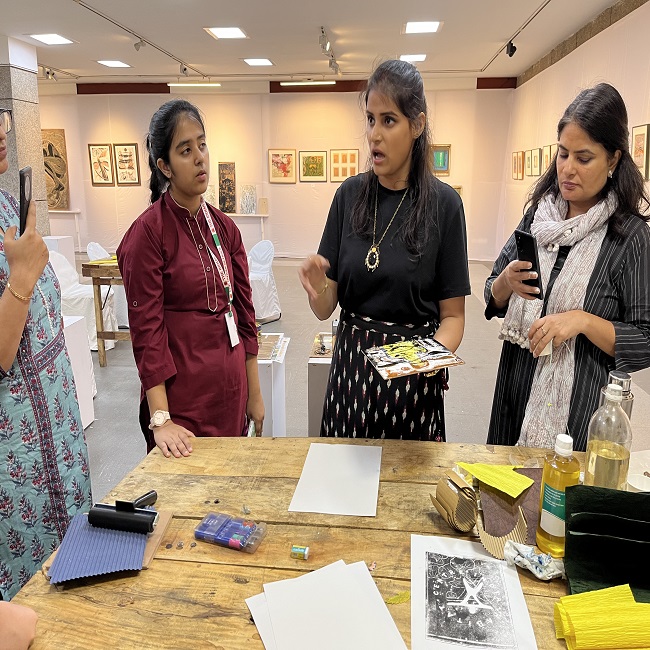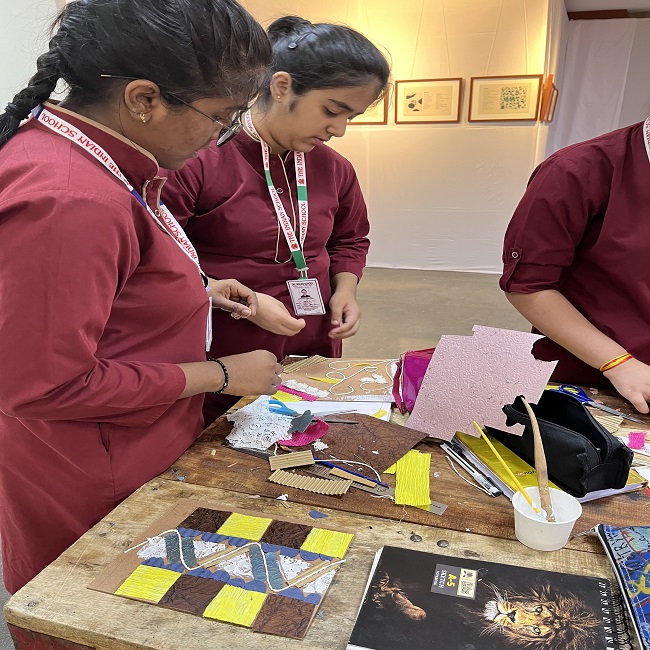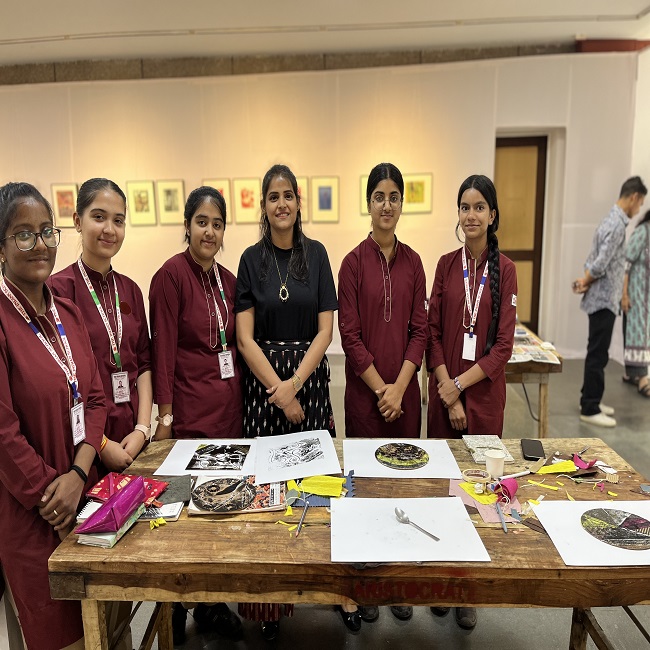Classes 11 and 12 attend Wood Block Printing workshop
Selected students from classes 11 and 12, along with their teacher, Ms Prerna, visited the Visual Arts Gallery at the India Habitat Centre on May 10, 2024, for a workshop on Choreography Printing conducted by Messrs Prianshu and Harish who own a printing studio in Garhi. It was a creative and experiential workshop.
Before commencement, the students were given a tour of the artworks displayed in the gallery, showcasing the diverse approaches to printing by different artists. Some artists favoured colour, while others preferred solely using black oil paint.
During the workshop, the students had the opportunity to explore the works of various artists. Dattateya Apte, known for his paintings resembling wooden prints and pulp paintings, displayed pieces such as "The River Bed," "The Studio," and "Banff Sheet Reflection." Jyoti Bhatt showcased his expertise in Rangoli Patterns, Cross Stitch, Embroidery, and Trikoot. Jai Zharotia's specialisation in silkscreen printing was evident in his exhibited works. Dhamal, renowned for wood engraving, presented his intricate creations. Shushant Guha introduced the students to lithography, displaying pieces like "Harmony In Nature," "One with Nature," and "Bundle of Joy," among others. Finally, Moti Zha Rotia exhibited paintings based on serigraphy, providing a diverse and enriching experience for the attendees.
Students then witnessed relief painting, during which a cardboard disc/plank was used as a base onto which various materials like pencil shavings, leftover lace, handmade paper, texture white, etc., were applied.
The students then choreographed their designs on the chosen disc/plank. One could either meticulously plan the design or, as the host suggested, let creativity flow spontaneously. The choreography was then left to dry in the sun. Once dried, they prepared their colours using 'letter pressing colours' mixed with linseed oil to achieve the right viscosity for printing. These colours were prepared on a smooth surface, preferably glass. The roller was rolled over (not dragged) to maximise colour absorption. The next step was to apply pressure and register the colour evenly on the choreographed disc. Subsequently, they printed the design on paper using the spooning method. The final step was drying until the colour was transfer-proof. Before concluding, the host demonstrated another printing process using wood engraving. They showed how printing on wood with a sharp tool yields refined prints and how prints vary depending on the medium used.
The workshop was enriching in many respects. Besides gaining a deeper understanding of choreography printing, witnessing the various interpretations and explorations by fellow creatives, including faculty members from NIFT, New Delhi, was inspiring and left the students overwhelmed as they departed.















